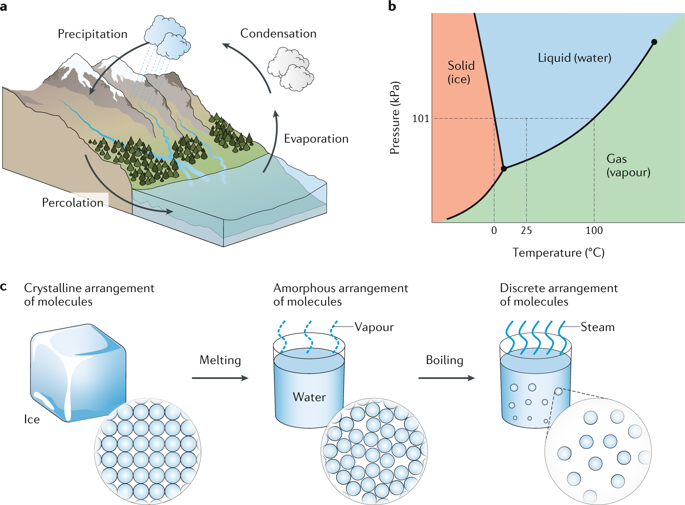Nature Reviews Materials ( IF 79.8 ) Pub Date : 2020-03-10 , DOI: 10.1038/s41578-020-0182-4 Fei Zhao , Youhong Guo , Xingyi Zhou , Wen Shi , Guihua Yu

|
Solar-powered water evaporation — the extraction of vapour from liquid water using solar energy — provides the basis for the development of eco-friendly and cost-effective freshwater production. Liquid water consumes and carries energy, and, thus, plays an essential role in this process. As such, extensive experimental and theoretical studies have been focused on water management to achieve efficient solar vapour generation. Many innovative materials have been proposed to enable highly controllable and efficient solar-to-thermal energy conversion to address the challenges in the energy–water nexus from the microscale to the molecular level. In this Review, we summarize the fundamental principles of materials design for efficient solar-to-thermal energy conversion and vapour generation. We discuss how to integrate photothermal materials, nanostructures/microstructures and water–material interactions to improve the performance of the evaporation system via in situ utilization of solar energy. Focusing on materials science and engineering, we overview the key challenges and opportunities for nanostructured and microstructured materials in both fundamental research and practical water-purification applications.
中文翻译:

太阳能水蒸发材料
太阳能蒸发水-使用太阳能从液态水中提取蒸气-为发展生态友好且具有成本效益的淡水生产奠定了基础。液态水消耗并携带能量,因此在此过程中起着至关重要的作用。因此,广泛的实验和理论研究集中于水管理以实现有效的太阳蒸气产生。已经提出了许多创新的材料,以实现高度可控和高效的太阳能到热能的转换,以解决从微观到分子水平的能源-水关系中的挑战。在这篇评论中,我们总结了有效进行太阳能到热能转换和产生蒸汽的材料设计的基本原理。我们讨论如何集成光热材料,纳米结构/微结构和水-材料相互作用,通过原位利用太阳能来改善蒸发系统的性能。着眼于材料科学和工程,我们概述了基础研究和实际水净化应用中纳米结构和微结构材料的主要挑战和机遇。


















































 京公网安备 11010802027423号
京公网安备 11010802027423号